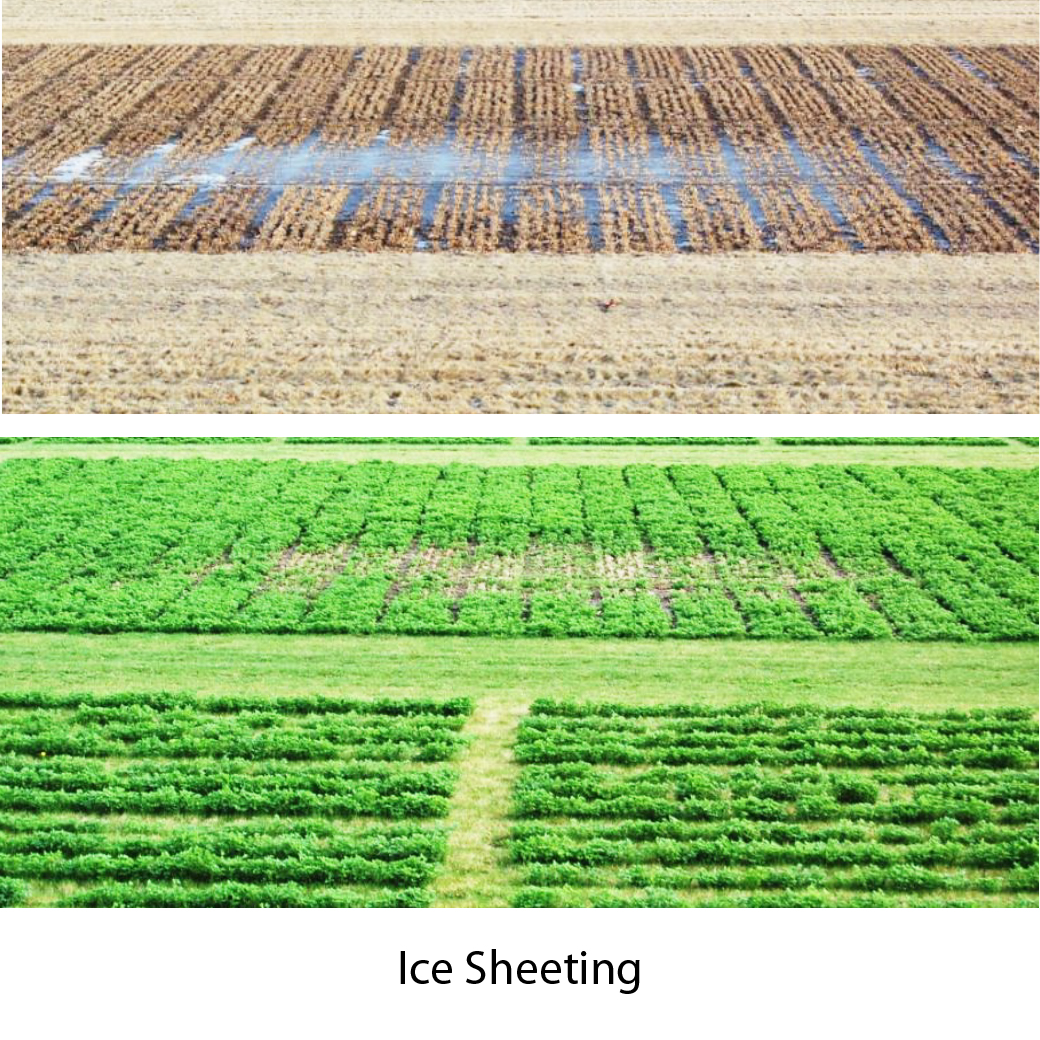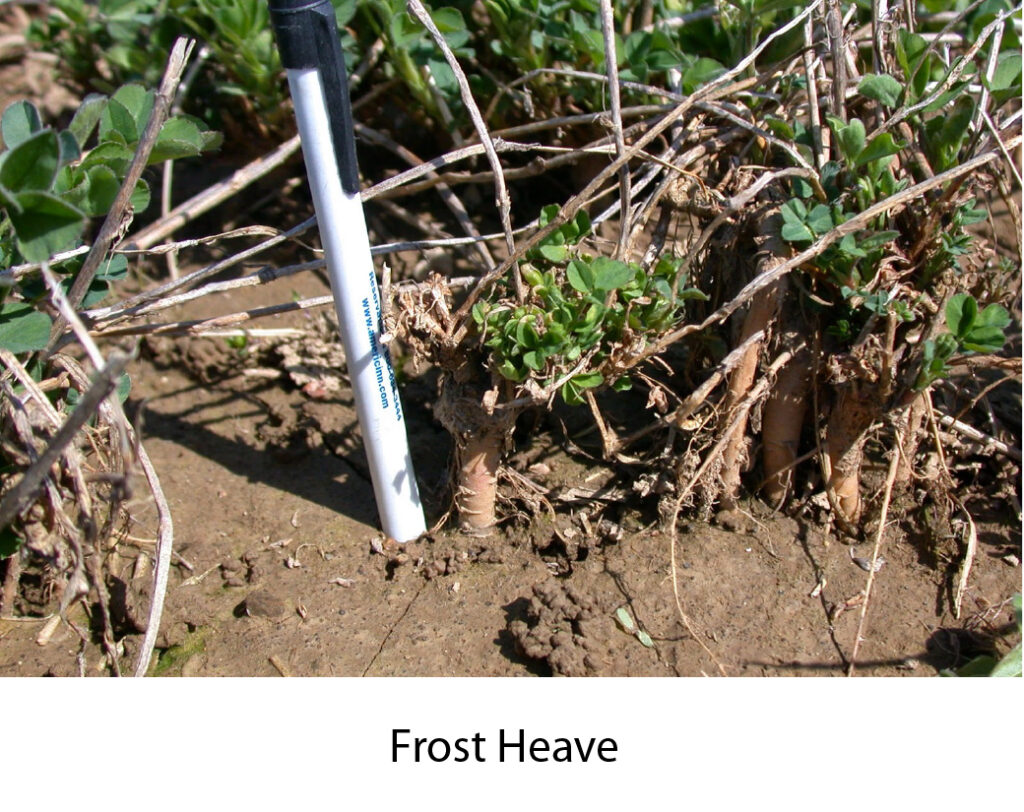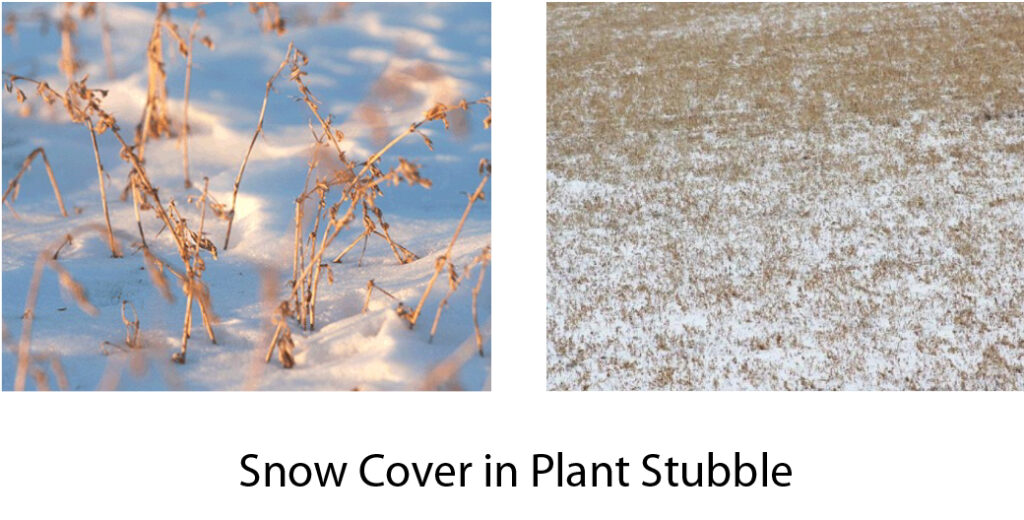Fall Management to Reduce Alfalfa Winterkill
Fall Management Tips to Reduce the Risk of Alfalfa Winterkill
Don Miller, PhD.
Director of Product Development
Alforex Seeds
We can’t control the weather and some years the potential for alfalfa winter injury and/or winterkill does exist. Alfalfa under most conditions is a very durable crop. However, under the right conditions, can suffer significant winter damage. Often the damage is due to the severity of the winter, but in some cases our management decisions and/or harvest schedules can be a contributing factor.
However, there are management tips that can help reduce the risk alfalfa winterkill. These practices, if implemented correctly, can in a sense “Winterize Your Alfalfa” and give it the best chance of surviving harsh winter conditions.
Two major factors can contribute to winter injury and /or winterkill in alfalfa fields. The most obvious is severe winter weather, and the second is crop management during the growing season.

Severe Winter Weather
Four weather related conditions are generally responsible for alfalfa winterkill; 1) Cold Soil Temperatures, 2) Ice Sheeting, 3) Plant Heaving, and 4) Warm Mid-Winter Periods Followed by Sudden Cold Temperatures. The following is a description of those conditions and some management tips that have been shown to minimize the potential winterkill risk related to each factor.
- Cold soil temperatures: Alfalfa winterkill can occur if soil temperatures (at 2–4 Inches) reach in the range of 12–13 degrees F or lower. Snow cover of at least four inches is considered adequate to insulate alfalfa from these extreme temperatures. The lack of snow cover in open winters is a major factor in alfalfa winterkill and/or winter injury.
- Management tip: Adjust cutting height of the last fall cut to leave 4–6 inches of stubble. The stubble can be very beneficial in collecting adequate snow cover to provide some insulation to the alfalfa plant from the cold winter temperatures
- Ice sheeting: This condition occurs when melting snow or rain refreezes during the winter, completely covering plants. This type of winterkill can be quite severe, especially if the ice covers the alfalfa for more than 30 days. Plant death is attributed to the lack of oxygen under the ice. Plant death may occur more often in low lying areas of fields where water can pool and freeze.
- Management tip: Leave 4–6 inches of stubble on last cut. A high stubble that sticks above an ice sheet has been reported to help reduce the amount of damage, however it is no guarantee.
- Plant heaving: Heaving occurs on heavy soils that have high moisture content. The repeated freezing and thawing of these wet soils can result in pushing a portion of alfalfa root out of the ground. In severe cases the top 2–4 inches of the crown and root may be exposed above the soil surface. These exposed crowns are often cut off during the first harvest resulting in plant death.
- Management tip:
- Tiling fields to improve drainage can be beneficial by removing excess moisture that contributes to heaving.
- Leaving some crop residue on the soil surface can reduce winter heaving by insulating the soil and reducing the number of times freezing and thawing occurs.
- Management tip:
- Warm mid-winter periods followed by sudden cold temperatures: Plants can lose their ability to survive cold temperatures if there is a mid – winter warm period where the plant breaks dormancy. This break in dormancy followed by a sudden change back to cold temperatures can result in winter injury.
- Management tip: Very little can be done to prevent this type of winterkill. However more dormant varieties are less likely to break dormancy during these warm mid-winter periods, and therefore are less likely to be injured by a sudden drop in temperature.

Alfalfa Crop Management During The Growing Season
Any practice that increases plant stress can affect alfalfas ability to survive harsh winter conditions. The following is a list of stress factors and some management tips to minimize the risk of winter injury and/or winterkill.
- Timing of the last cut is probably the most important factor in preventing winterkill. An untimely last cut can result in plants with low root reserves which are more likely to winterkill.
- Management tip: Fields need to either be cut early enough in the fall to regrow and replenish root reserves before winter or late enough where there is no short regrowth that depletes the root reserves. Timing the last cut of the season should occur 6–8 weeks before the killing frost date (24 degrees F) to allow adequate regrowth time to recharge the root reserves.
- Aggressive Cutting Schedules: Frequent short harvest intervals during the growing season without a period of full recovery especially on the last cut before winter, can be detrimental to the alfalfa fields winter survival.
- Management tip: If several harvest intervals have been aggressive (pre-bud or bud) during the season, it is best to allow a later cut to reach ~50% flowering before winter, preferably the last cut. Avoid cutting older stands aggressively in the fall.
- Plant Stress Factors: Plants under stress are more likely to winterkill.
- Management tips:
- Maintain a soil pH in the range of 6.5–7.5 by adding lime if needed.
- Maintain soil fertility. Potassium is especially important for winter survival and acts as a plant’s natural antifreeze within the cells. High exchangeable soil potassium (greater than 160 ppm) reduces risk of winterkill.
- Control pests during the growing season as needed to minimize plant stress.
- Management tips:

Summary
What you do during the growing season can greatly affect the ability of your alfalfa to avoid winter injury. Properly managing plant stresses and alfalfa root reserves throughout the season can pay big dividends to producers in the form of improved quality, yield, and stand life.
It should be noted that of all the management tips to minimize the risk of winterkill: Timing of the last cut is probably the most important factor in preventing winterkill.
More posts about winter injury and winterkill.
- Evaluating Your Alfalfa Stand for Winter Injury/Winterkill and Your Options
- Alfalfa Livestream Best Management Practices for Stand Establishment
- Fall Planted Alfalfa
- 2019 An Alfalfa Year in Review


Comments
Fall Management to Reduce Alfalfa Winterkill — No Comments
HTML tags allowed in your comment: <a href="" title=""> <abbr title=""> <acronym title=""> <b> <blockquote cite=""> <cite> <code> <del datetime=""> <em> <i> <q cite=""> <s> <strike> <strong>